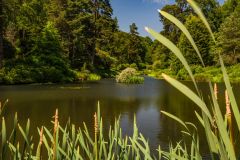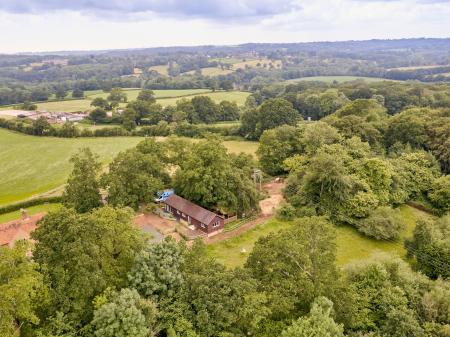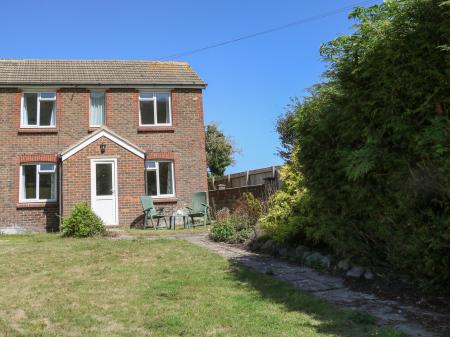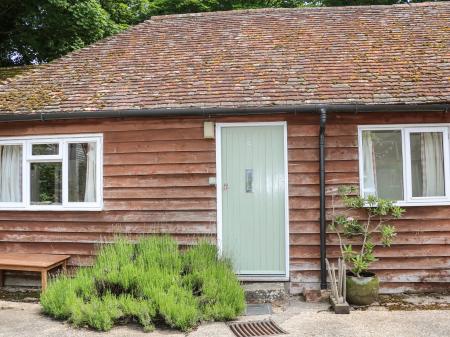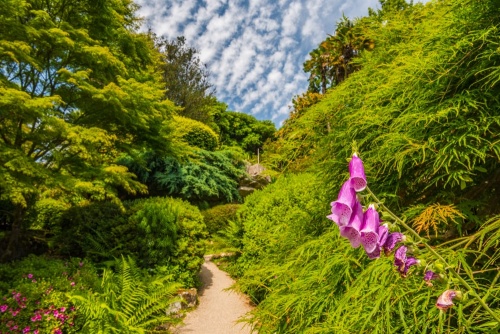
History
This historic garden was begun in 1801 to complement nearby Leonardslee House, now a hotel, restaurant, art gallery, and wedding venue. The history of the site goes much further back, however, into the Middle Ages, when St Leonard's Forest stood here.
Though many early tracts of forest were cut down to make way for agriculture, the soil of St Leonard's Forest was too acidic for farming, so the natural woodland remained until the 16th century, when trees were cut down to make way for iron mining. Charles II granted the forest to his personal physician, Sir Edward Greaves, and the estate later passed to the Aldridge family.

Part of the ancient forest estate was sold to Charles G. Beauclark in 1801, and it was he who built a house known as St Leonard's Lodge. The Beauclark family began to create the first gardens here.
Then in 1889, Sir Edmund Loder bought the estate from his parents-in-law and began to plant the existing parkland with a variety of trees, azaleas and rhododendrons.
Loder was an avid plant collector and filled his garden with exotic and rare species brought to Britain by plant collectors. Loder was more than a collector; he developed new hybrid rhododendrons that now bear the name Loderi in his honour.
Loder built the rock gardens, using a mix of natural rocks and artificial sandstone. The rock garden is surrounded by coniferous trees to provide a sheltered environment.

The gardens are set in a steep-sided valley containing a series of seven man-made lakes. Some of the lakes were created to provide power for nearby ironworks.
A rare feature at Leonardslee is a colony of wallabies which wander freely in the gardens. One of the final additions to the Victorian gardens was a rock garden near the house, established in 1890. At the same time, a series of caves were built for mouflon, or wild sheep, but they are now used by the wallabies.

Garden Highlights
The oldest part of Leonardslee is the Loderi Garden, home to mature rhododendrons, palms, and giant conifers. Near Leonardslee House is a fascinating 'Beyond the Dolls' House' exhibit, where you can enjoy a world in miniature look at rural living on a country house estate and village.
Along the trail from the dolls' house exhibit is the Daffodil Lawn, at its best from early March, where you can get wonderful views across the valley to Mossy Ghyll Pond on the opposite slope.
Beyond the Daffodil Lawn is The Dell, home to a gigantic Cornish Red Rhododendron, planted in the Victorian period.

Down the slope from The Dell is a stunning Algerian Oak (Quercus canariensis). Measuring 33.6m, it is the tallest-known example in the world.
On the far side of Clapper Pond is the Coronation Garden, planted to mark the coronation of Elizabeth II in 1952. This oval garden features fine examples of Rhododendron Loderi. Beyond the Coronation Garden is the Top Garden, planted between 1901 and 1905 by Sir Edmund Loder as a pinetum. Many of the original trees were lost in the devastating storm of 1987, but the Top Garden has been restored and recently reopened to visitors.
Follow Mossy Ghyll Pond to Engine Pond and a picturesque Engine House, built to pump water to the top of the valley. The Engine House is now a seasonal cafe offering wonderful views along the lakes on both sides. Carry on past the Engine House to the Bluebell Bank, a carpet of vivid blue during the spring.

Stop in a bird hide looking across New Pond and see how many species you can spot, and continue to the far end of the lakes to enjoy the Deer Park, home to a resident herd of over a hundred fallow and Sika deer.
At the top of the slope, near Leonardslee House, is the UK's first heritage pinotage vineyard, and beside the vineyard is the wallaby enclosure, where you can see baby wallabies and their mothers and enjoy the daily noon feeding.
Next to the wallaby enclosure is the Camelia Walk, where you can enjoy palms as well as interesting varieties of Pieris.
Those are just a few of the highlights on offer at Leonardslee. The site is criss-crossed by trails, with wonderful views across the valley and beyond. Leonardslee is a delight.

Getting There
Leonardslee is five miles south-east of Horsham, at the junction of the B2110 and A281. It is very well signposted and there is a large parking area.







